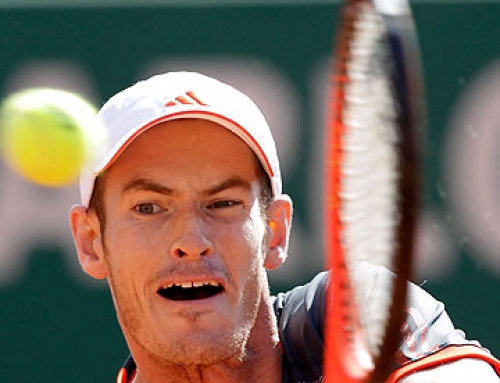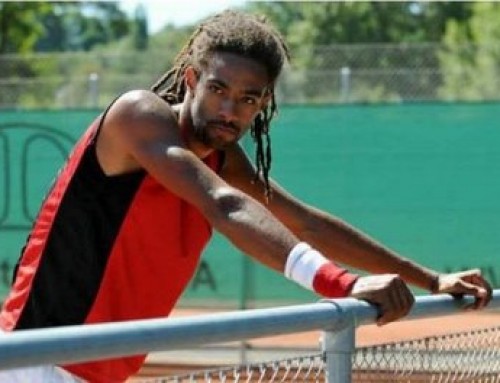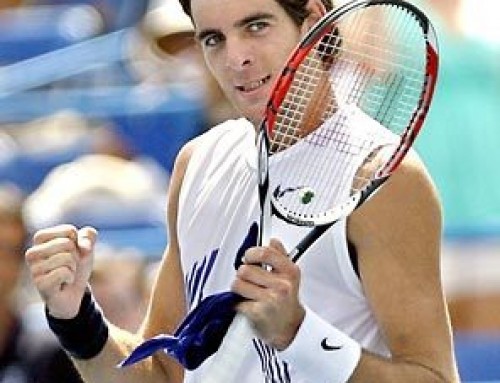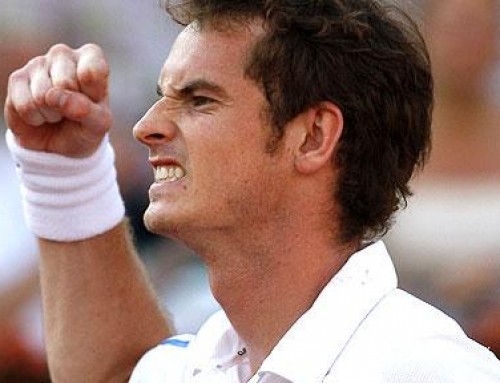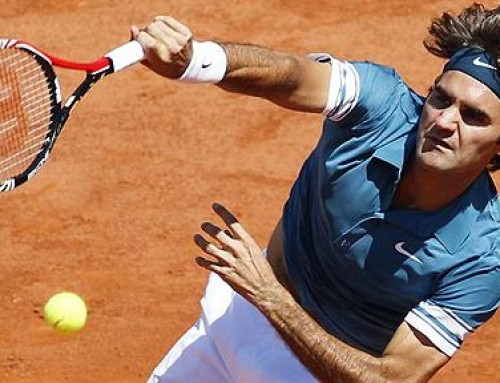Remember when we had this discussion last? Oh yes, that was four weeks ago, when Federer won the French Open for the very first time.
Let’s look at some criteria for discussing the “best ever”. One common criteria, but rarely used, is “how would they play if they were all in the same tournament”. Tennis, like many other sports, has changed a great deal.
Consider the height of the players. At one point, Rod Laver was number one at a height of 5’9″. He wasn’t considered exceptionally short, either. Connors, Borg, McEnroe, all were under 6′ tall. Indeed, players that were taller than 6′ were generally thought of as slow and lumbering. Tall players almost universally served and volleyed.
Here’s another change. Watch a classic match from the 1970s on clay. I was watching John McEnroe play Guillermo Vilas on HarTru, the green clay you find in the US. Although McEnroe was a serve and volleyer, he hit his groundstrokes well enough to play with Vilas from the baseline. Vilas was a lefty baseliner, one hand on both sides, from Argentina, with a bulky forearm. One might say he used more arm than most players of his day.
Most of these rallies required very little running. Players were walking on half a court, rarely having to run wide of the court. NBC was tracking how much running players were doing, and at times, it was significant. This alone shows the kind of athletic prowess you needed. When you don’t have to run as much, there are other skills that are more important.
Of course, the biggests changes have been the racquets and the strings. Once, all the top players played with gut. They were all sponsored, so the expense of paying for gut was no problem. There really wasn’t a viable alternative. If you didn’t have gut, you had cheap nylon, which lasted a long time, but wasn’t playable at the highest levels. Gut was soft, held its tension well.
For a while, bigger racquets lead to higher string tensions. Most people strung their wooden racquets in the low to mid 50 lb range. They recommended midsizes (in those days, that would be 70-85 sqaure inches) at 60 lbs, and oversizes (110 square inches) at 70 lbs. These days, most players have settled on a racquet head size between 90 to 100 square inches, and what do they string it at? Most in the 50 lb range, and a few in the low 60s. No one strings it at the Borg-ish tension of 80 lbs.
Then, came the poly strings. Everyone jumped on this bandwagon. A few folks, like the Williams sisters or Wozniacki, still prefer gut. Roger Federer allegedly strings his mains with gut. But his crosses are poly. The most famous brand are Luxilon, but all string manufacturers make some version of poly. These strings allegedly have less feel, but greater spin potential.
This mean players could take vicious swipes at the ball, and still have it land in.
And that meant topspin was more important than ever. In the days when Australians ruled the tennis world, topspin was a novelty. Laver was one of those early players that hit topspin on both sides, but he was as likely to hit flat or slice as anyone else. And he was a serve and volleyer, so he wasn’t hitting a ton of groundies. Compared to today, he probably hit with significantly less spin.
There’s a match somewhere on the Internet that is probably as unusual as it gets. Rod Laver in his twilight years playing Bjorn Borg as he was ascending up. The two styles as contrasty as it gets.
Thus, today’s players are taller, more athletic, and have bigger racquets that allow them to hit vicious topspin and get it in. People say, give Rod Laver a modern racquet with modern hitting, and he’d do just as well. But you don’t know. In basketball, they say, you can’t teach height, and it seems height is important. Sure, there are players like Dudi Sela or Christophe Rochus that play top flight tennis without being really tall, but they aren’t at the very top. With players like Cilic and del Potro and Querrey making inroads at the top of the game, it’s not clear that even more height doesn’t help. 6’10” Ivo Karlovic makes a pretty good living from tennis, and no player was that close. Even 6’5″ was a bit exotic in Borg’s day.
And who knows if Rod Laver, who was tuned to playing the Aussie style, could have adapted his style to the modern way, and then excelled at this style better than anyone else? Was he an outstanding enough an athlete to run around like today’s athletes?
The one argument for someone like Laver succeeding at the highest level is John McEnroe. Without players like him, you couldn’t even think a style like Laver would work today. McEnroe was still making the semifinals of Grand Slam events into the early 1990s. To be fair, the era hadn’t quite moved to the all-power game you see today. Many players were closer to the Mats Wilander mold, a guy who was steady, moved well, but didn’t hit a ton.
The 90s would give rise to more and more players playing that style, especially Americans. Agassi and Courier were hard hitters. Chang, a little less so. Ivanisevic hit big, not only on the serve, but off the ground. Petr Korda was pretty powerful too. You’d see a player like Tim Henman who had decent groundstrokes for a serve and volleyer, but these days, even good serve and volleyers have to have good topspin shots.
So you can’t point to how players would do in different eras. You could, say, give Roger Federer a wooden racquet, but he already knows how to hit the big shots he normally hits. He knows winners are possible. He would have an easier time adapting his current shots than Laver would trying to learn something completely different.
How about quality of opponents?
The easiest comparison to make between players of a different generation is Sampras and Federer, and that’s because their careers almost overlap. Did Sampras have better opponents? Again, a bit tough to say. We think of his opponents more positively for two reasons. One is because his opponents won some Slams (always important) and the other is because they were American.
Who were Sampras’s opponents? You had an aging Becker, Edberg, and Lendl. There was, of course, Andre Agassi. Sampras, Chang, Rafter, Ivanisevic. But Sampras didn’t have anyone that truly scared him. Players like Ivanisevic were not consistent enough, and they were never number 2 in the world. The players that bothered Sampras were on clay, and Sampras’s effectiveness on clay is like the Willliams sisters effectiveness on clay. In other words, not so much. You really have to give credit to Federer who improved his game so much that he gave himself plenty of opportunities to win on clay. The key difference between Federer and Sampras is upbringing. Even though clay is Federer’s weakest surface, he did grow up on the surface.
Federer has lost to only one opponent in Grand Slam finals: Rafael Nadal. Sampras lost to four different people: Edberg, Agassi, Hewitt, Safin. His five US Open wins? Two were to Agassi, who he generally dominated, one to Chang, who did well against him early in his career, but couldn’t handle his firepower later on, and one to Cedric Pioline. Indeed, Pioline may be the only two time Grand Slam finalist that never won a title (OK, there’s Steve Denton, but this was at a weak weak period in Australian Open history). Sampras beat Pioline for one of his other titles.
It’s easily agreed that Federer has had more dominant years than Sampras. Sampras never won three Slams in one year. Federer has done it three times. Federer is also consistent. He constantly gets to later rounds of the majors, but even more than that, Federer just doesn’t lose to anyone outside the top 5 in the majors.
The one thing that is on Pete Sampras’s side is his longevity. He won early and he won late. The US Open serves as bookends to a pretty long career. He won in 1990 as a 19 year old. He won in 2002 as a 31 year old, with that last performance being pretty unexpected. He had gone a long time without winning a tournament of any sort, hoping he could put together one great tournament, which he did, and it was the one to make that record.
Federer is currently tied with Andre Agassi for the most ATP titles. Agassi had 60 titles. Sampras had 64 titles. One imagines Federer will move past Vilas at 62, Borg at 63, and Sampras at 64 (the last title being the US Open).
The other thing Sampras had on his side is his head-to-head against pretty much everyone. Sampras has a favorable win-loss record over any opponent he played more than a few times, which includes a slim lead over Wayne Ferreira. Federer’s win-loss is different. There are players that simply haven’t beaten him or have only beaten him once or twice (Roddick, Gonzalez, del Potro, etc). He has two significant head-to-head losing records, against the number 2 and 3 player in the world (Nadal and Murray).
By the way, the most aces served in a match and the fourth most occurred in the last two Slams. Karlovic hit 55 aces against Hewitt in the French Open. That is number 1. Karlovic is number 2 with 51 aces. Johansson (Joachim, not Thomas) had 51 aces against Agassi(!). Finally, Federer had 50 aces against Roddick (needing a long fifth set to hit so many).
Federer’s main competitors for best ever come from Sampras and Laver. Had Federer won a Grand Slam in, say 2006, there would be almost no question, or at least, Laver would be the only other serious mention. Borg ought to be up there, but failing to win the US Open was huge, especially since it was played on clay for two years. It also didn’t help that Borg avoided the Australian Open, though if he had played, he probably would have easily won a few titles given the horrible draws the Australian Open had in the mid to late 1970s (none of the top players bothered to go). And guess who Federer had his photo taken with? Yup.
So, there’s still some debate about best ever, but Federer is starting to make some distance between him and Sampras. Another title or two would probably solidify that argument more.



